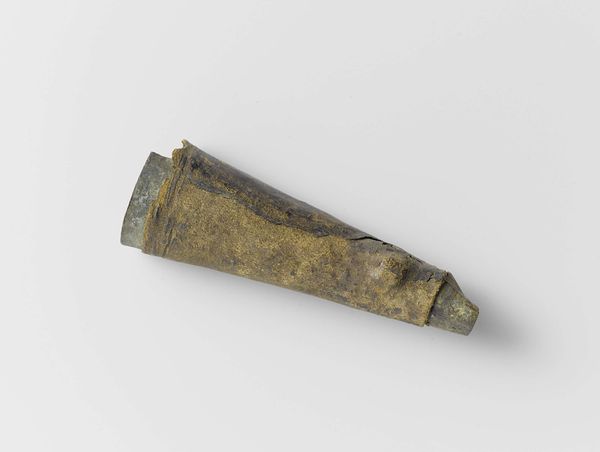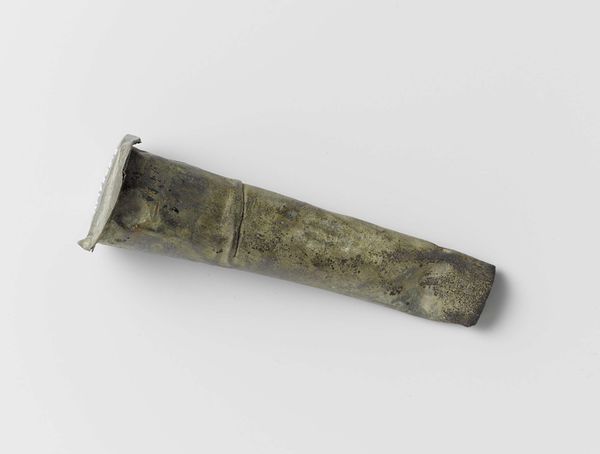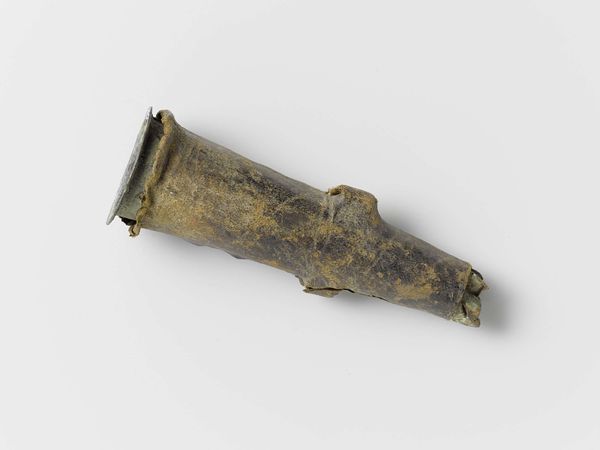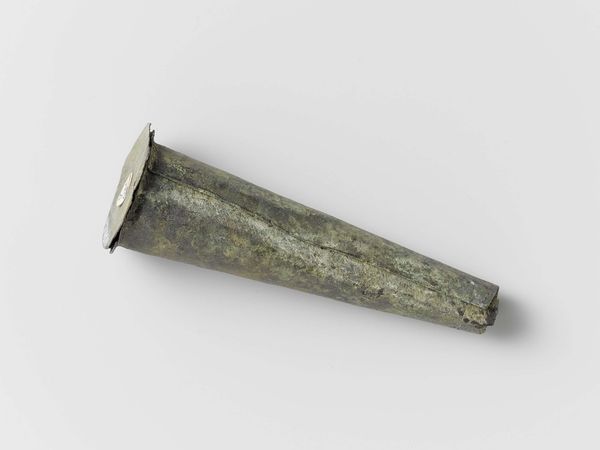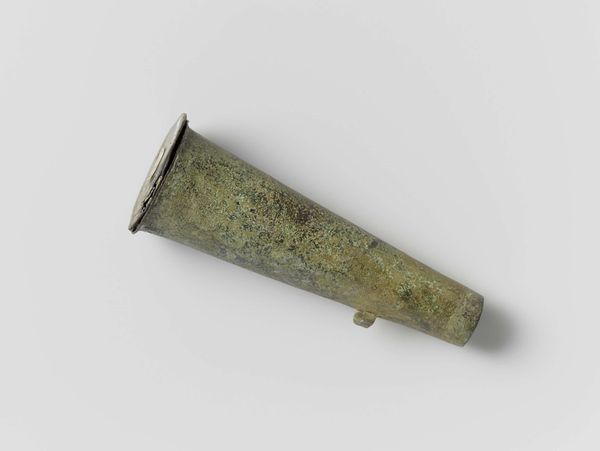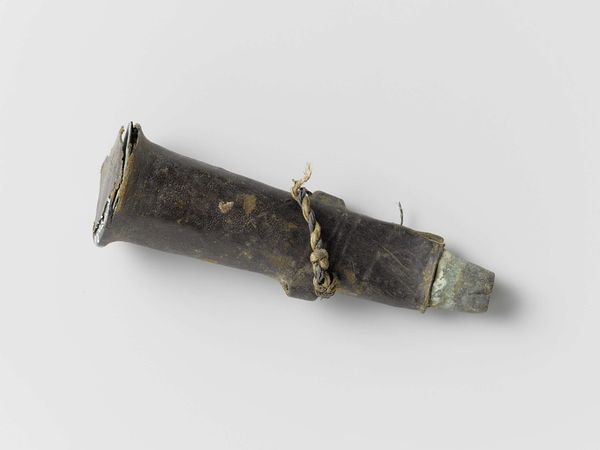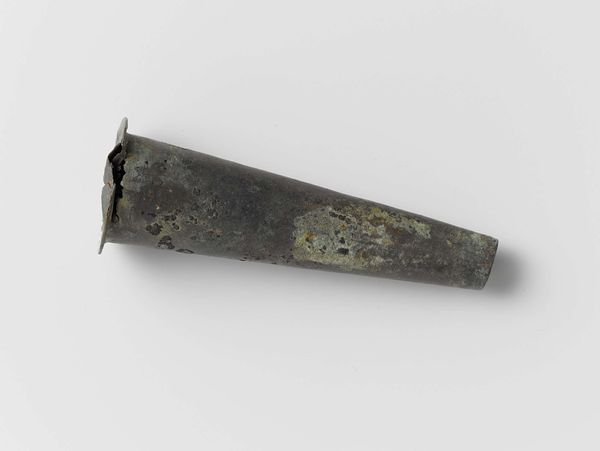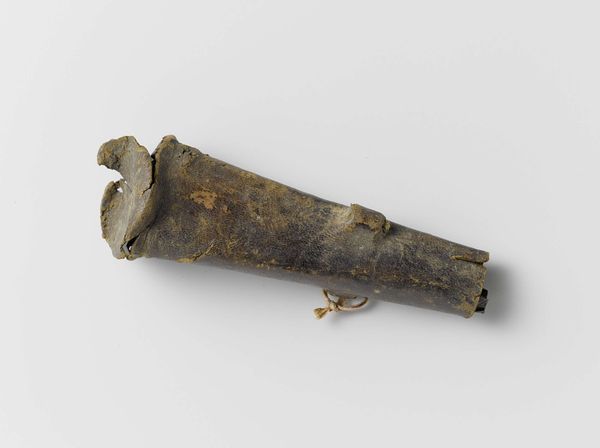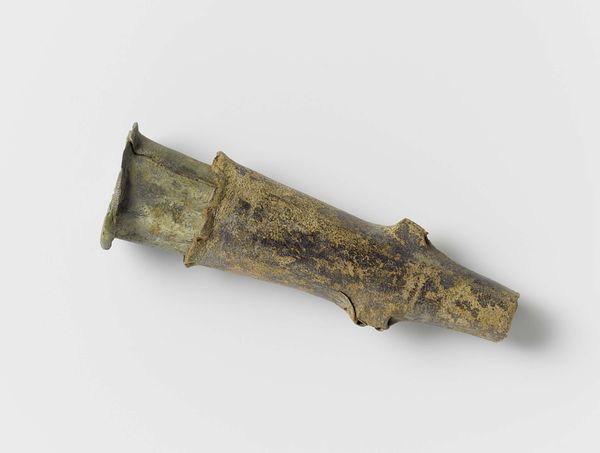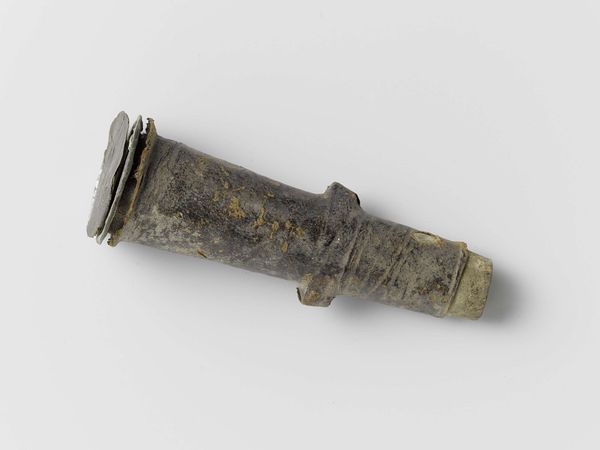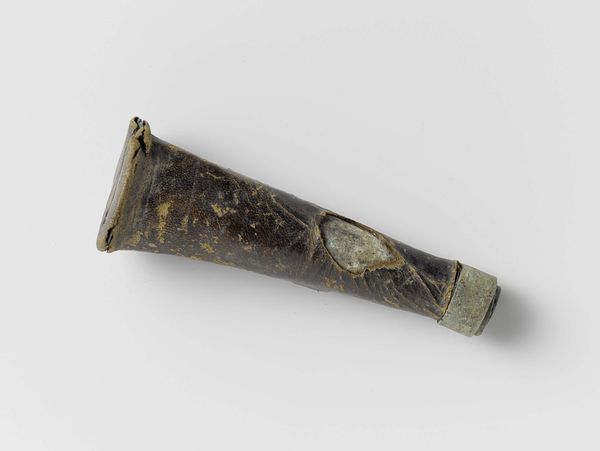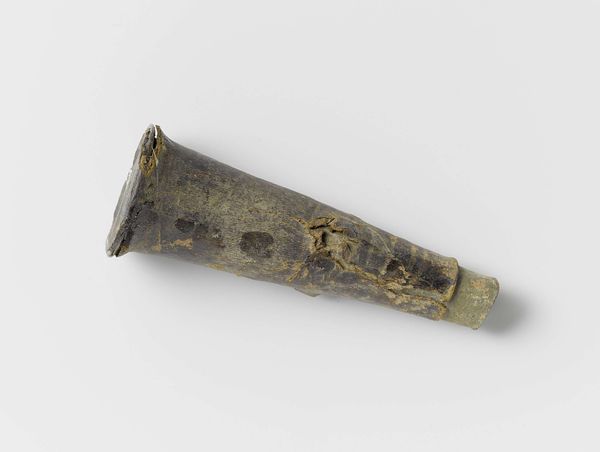
Musketmaat, fragment bestaande uit sterk vervormd messing huls met gaten c. 1590 - 1596
0:00
0:00
assemblage, metal, found-object, bronze, sculpture
#
medieval
#
assemblage
#
metal
#
found-object
#
bronze
#
form
#
sculpture
Dimensions: width 11 cm, diameter 3.6 cm
Copyright: Rijks Museum: Open Domain
This fragment of a musket’s measuring device, crafted from deformed brass, speaks volumes despite its anonymous origin. Its very form—a hollow shell now misshapen with age and wear—echoes the fragility of human endeavors. Consider how such a tool, intended for precision in warfare, has itself become a casualty. The holes and deformations are not mere damage; they are symbolic wounds. Like the broken columns found in ancient Roman ruins, this object communicates the inevitable decay and the futility of conflict. The use of metal is an evolution of prehistoric war implements crafted from stone. The item transcends its practical function to become a poignant reminder of mortality, a motif that resurfaces across epochs. The measuring device, damaged and discarded, engages us on a subconscious level, prompting reflection on the cyclical nature of destruction and rebirth.
Comments
No comments
Be the first to comment and join the conversation on the ultimate creative platform.
